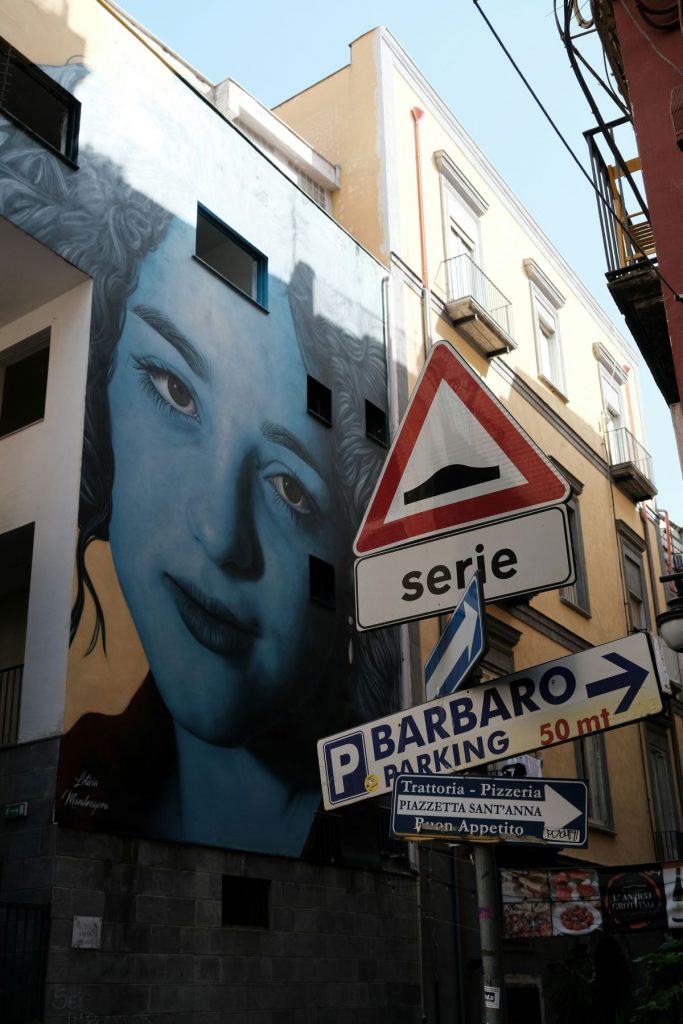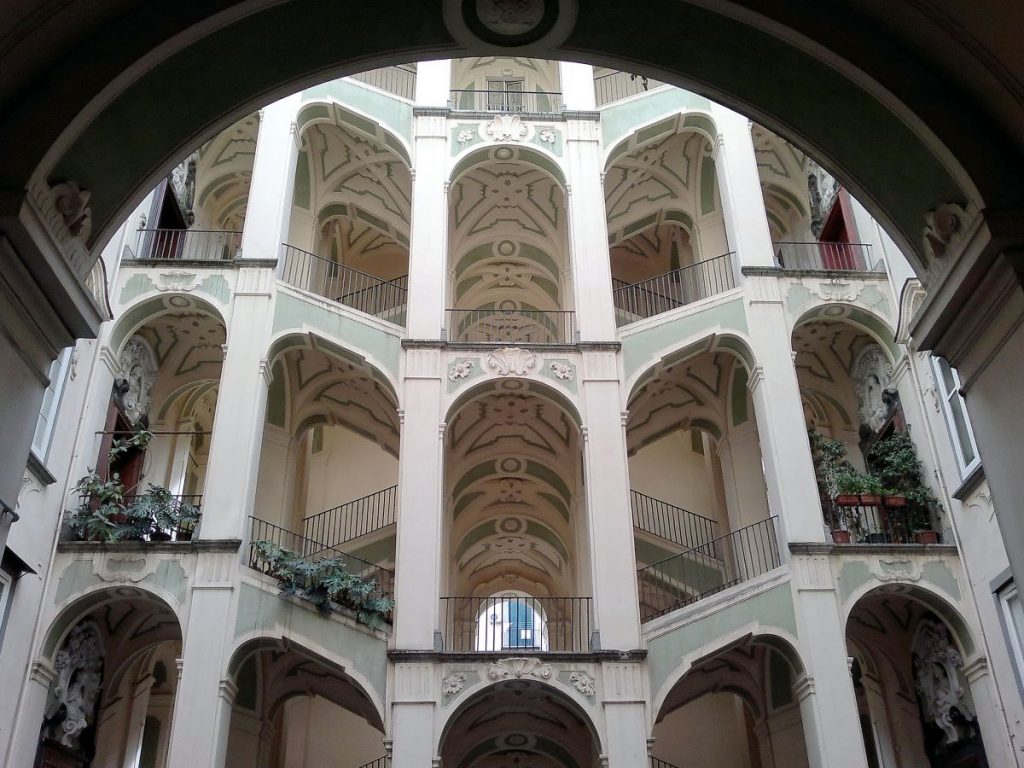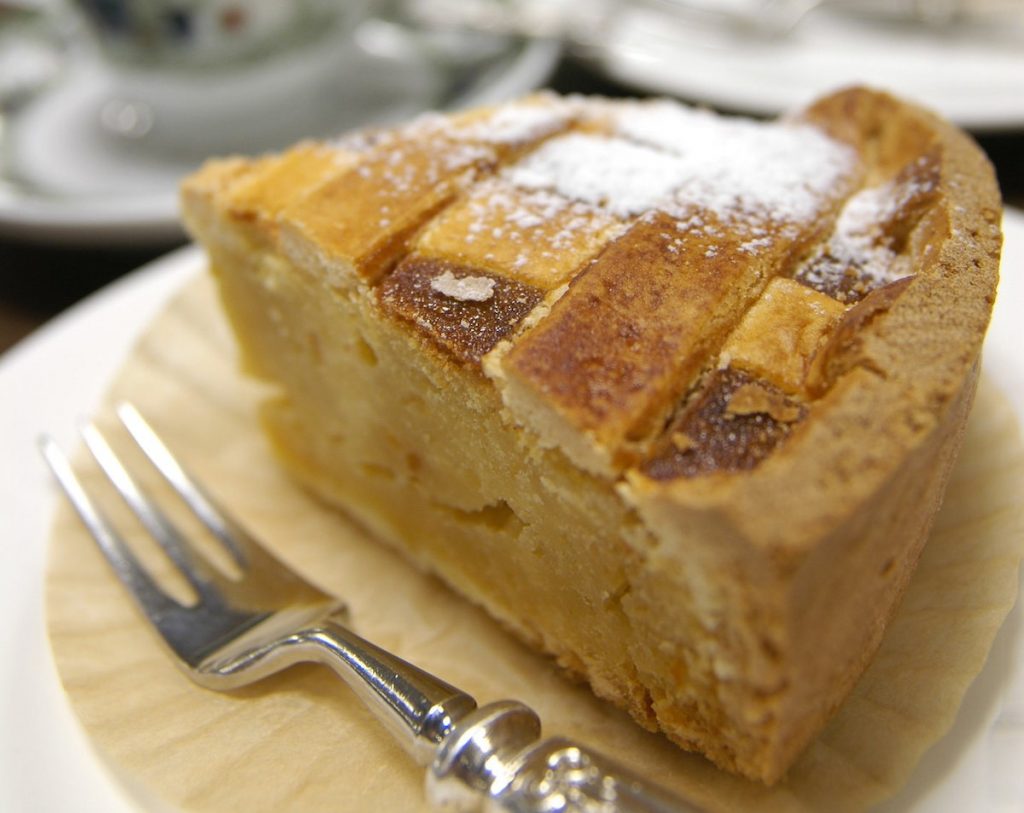Although a tiny off-the-beaten-path neighborhood, Rione Sanità, Naples packed with history and culture. (“Rione” means “district” or “neighbordhood”) The area was originally used in the Greek and Roman times as a burial ground, and is home to some fascinating Paleochristian catacombs. The name literally means “neighborhood of health” because of its fresh air (at the time of its founding…not anymore, unfortunately!) and because of the healing powers believed to be within the catacombs.
With the construction of the main church in the 17th century it morphed slowly into one of the most wealthy neighborhoods in Naples. You can still see two of the most spectacular buildings from that golden age today. Over time, Sanità fell into degradation, but is currently experiencing a resurgence of creative energy, restoration, and local interest. Experience the best of this macabre, gritty neighborhood with our guide of the best things to do in Sanità, Naples.

What to see in Sanità
Skulls and bones and catacombs, oh my!
First used as a cemetary in the early 400’s CE, the catacombs of San Gaudioso are buried under the center of Sanità and still preserve the feeling and traditions of early Christianity. St. Gaudosius, originally from Tunisia, is a representation of the historical multiculturalism of Naples.
The catacombs of San Gaudioso are one of nine known catacombs under the city, but only three of those have been restored and are open. The others lay abandoned.

If you can’t get enough of churches and catacombs, you can walk an itinerary called the Holy Mile with a guided tour or by yourself. It starts uphill at the church next to the catacombs of San Gennaro. After checking out the catacombs, the route takes you down into Rione Sanità, passing by several historical churches. You’ll end up at Porta San Gennaro, the oldest city gate still standing. It was first mentioned in 928!
Insider’s tip: If you’re really looking to dive into the creepy side of this intriguing city, take a stroll through the popular Fontanelle Cemetery, where locals adopt and care for a skull of an abandoned soul in exchange for protection of their own.

Striking street art
One of the most interesting parts of the neighborhood of Sanità is its street art. Massive murals depict popular figures in Neapolitan culture as well as the common people of the neighborhood.
The best route for discovering all the street art is to walk along the main market street of Via Vergini, check out Vicolo della Cultura (Via Montesilvano), turn up Via Santa Maria Antesaecula, then continue to Piazza Sanità where you’ll find the most important neighborhood church. If you feel inspired, continue all the way to the colorful Parrocchia Maria Santissima del Carmine (Via Fontanelle, 76).
Even if you don’t care much for street art, this is a great route for discovering the neighborhood! You’ll be able to see the bustling markets, winding streets, and the main piazza.

Beautiful Baroque architecture
During the 17th and 18th centuries, Rione Sanità was a well-to-do area. Two amazing buildings still stand from that time, and are definitely worth stopping by. Palazzo dello Spagnolo (Via Vergini, 19) and Palazzo Sanfelice (Via Sanità, 2 e 6) are both breathtaking examples of Neapolitan baroque architecture, with their open staircases and layers of archways.

If you think they look similar, you’re right—they were both built between 1720 and 1740 by the same architect, Ferdinando Sanfelice.
Travel tip: These buildings are now private residences, so remember to be respectful of noise when you visit.
Where to eat and drink in Sanità
Pizza, pizza, pizza
Neapolitans love their fried food, and pizza is no exception! Fried pizza is called pizza fritta and is usually fried calzone that contains ricotta, provola (a type of mild cheese), basil, and cicoli (a fatty cured pork meat). Isabella De Cham Pizza Fritta (Via Arena della Sanità, 27) is a women-owned business that serves up mouth-watering fried pizza.
Pizzeria Concettina ai Tre Santi is a high-quality pizzeria that offers tasting menus at different price levels, from €30 to €80. We definitely recommend getting a tasting menu, which allows the chef to show off the regionally sourced ingredients. It may be a splurge compared to other pizzerias, but offers an intensely satisfying eating experience. This pizzeria received an “excellent” from Gambero Rosso, one of the most important food guides in Italy. Their varied and unique wine list is also worth a mention, and their sommelier can offer specific wine pairings for all you wine aficionados out there.
Looking for a more down-to-earth (or budget-friendly) pizza place? Campagnola Pizzeria (Via Fuori Porta S. Gennaro, 13) is a local favorite, offering flavorful pizzas with nice light crusts from €4 to €8.

Sweets in Sanità
The original storefront of one of the best pastry shops in the city, Poppella, lies in the heart of Sanità. They’re known for their fiocchi di neve, or snowflakes, which are sumptuous little cream-filled pasties. They’re so popular that the pastry shop now has several locations throughout the city.
Another notable pastry shop is Pasticceria di Costanzo (P.za Cavour, 133/135). They make fresh traditional pastries like pastiera along with more unique offerings like salted caramel and peanut brownies.

Best bars in Sanità
Although the neighborhoods of Vomero and Chiaia are more popular for nightlife, Rione Sanità has some great places to enjoy a refreshing drink in the afternoon and evening. Two bars worth mentioning in Sanità are Sciò and Antica Cantina Sepe.
- Sciò (Vico Buongiorno, 1) is a tiny bar just off the main street. It’s a unique atmosphere because the tiny alleyway where the bar is located is covered in beautiful street art. It’s a great place to sit outside for a drink or coffee and really soak up the energy of the area.
- Antica Cantina Sepe (Via Vergini, 55) is a perfect stop for a glass of local wine or a bite to eat from lunch onwards. They have a great selection that includes regional specialty wines like Aglianico and Falanghina. Every Thursday, they have live music starting around 7pm and is a popular place for locals to mix and mingle. During their Thursday night event, there’s even a fried pizza truck parked outside the bar!
Sanità is like a small but authentic cross-section of Naples: chaotic but with a lot of charm, and of course, great places to eat. You can’t miss this neighborhood if you like going a bit off the beaten path. And if you’d like to discover more of Naples, sign up for one of our wonderful small-group food tours where you can enjoy authentic slice of life in Naples, eating and drinking your way through the city.
